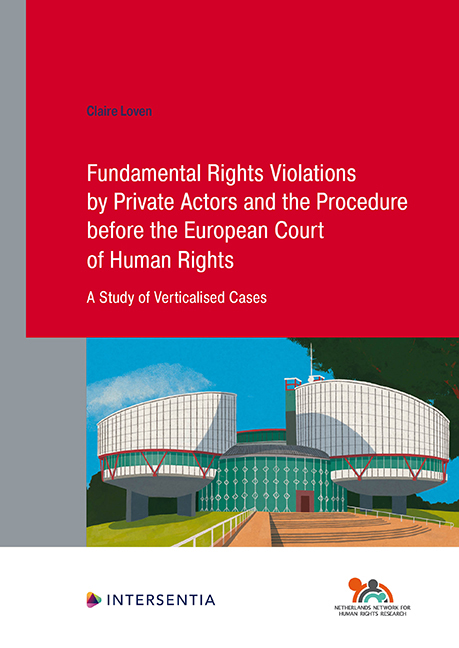 Fundamental Rights Violations by Private Actors and the Procedure before the European Court of Human Rights
Fundamental Rights Violations by Private Actors and the Procedure before the European Court of Human Rights This part of the research has provided a detailed analysis of verticalised cases before the ECtHR by looking at the origins of such cases, i.e. the characteristics of and the private actors involved in the case at the domestic level, and the Court's subsequent examination of these verticalised cases.
To qualify as a verticalised case as defined in this study, a case must originate from a horizontal conflict at the domestic level; in other words, a private actor has initiated proceedings against another private actor before the domestic courts, and, subsequently, one of these two private actors complains about State action or inaction in relation to this case before the ECtHR. This situation arises in a broad range of cases, as is clear from the case law analysis presented in the previous chapters. Verticalised cases can be rooted in different horizontal conflicts at the domestic level, involving different relations between private actors, and relating to different Convention rights. They can involve, for example, a conflict between an individual and a journalist about the right to reputation and private life and the right to freedom of expression, or a conflict between a child and an alleged father about access to information about one's origins. They can also relate to a conflict between separated or divorced parents on custody and access rights, or a conflict between an employer and an employee about religion in the workplace. In yet other verticalised cases, such as those relating to one's surroundings, the involvement of State authorities can be so strong that, on the domestic level, there is a shared or combined responsibility, resulting in a case involving both a Convention State and two private actors.
The wide variety of verticalised cases and the differences between them are reflected in the approach the Court takes to assessing these cases. In verticalised cases related to one's surroundings the Court examines whether a fair balance was struck between the interests of the individual and of the community as a whole, while in the other types of verticalised cases it examines how competing rights and interests of two private actors – the rights and interests of the applicant and those of the private actor involved in the conflict at the domestic level – were balanced. When examining whether a fair balance was struck, the Court's review may be less or more procedural, or substantive, in nature.
To save this book to your Kindle, first ensure [email protected] is added to your Approved Personal Document E-mail List under your Personal Document Settings on the Manage Your Content and Devices page of your Amazon account. Then enter the ‘name’ part of your Kindle email address below. Find out more about saving to your Kindle.
Note you can select to save to either the @free.kindle.com or @kindle.com variations. ‘@free.kindle.com’ emails are free but can only be saved to your device when it is connected to wi-fi. ‘@kindle.com’ emails can be delivered even when you are not connected to wi-fi, but note that service fees apply.
Find out more about the Kindle Personal Document Service.
To save content items to your account, please confirm that you agree to abide by our usage policies. If this is the first time you use this feature, you will be asked to authorise Cambridge Core to connect with your account. Find out more about saving content to Dropbox.
To save content items to your account, please confirm that you agree to abide by our usage policies. If this is the first time you use this feature, you will be asked to authorise Cambridge Core to connect with your account. Find out more about saving content to Google Drive.